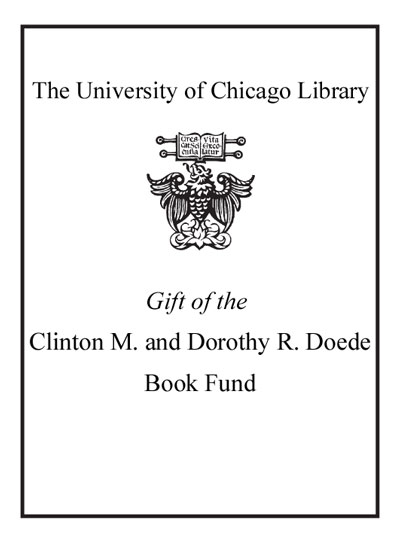Malay court religion, culture and language : interpreting the Qur'an in 17th century Aceh /
Saved in:
| Author / Creator: | Riddell, Peter G., author. |
|---|---|
| Imprint: | Leiden ; Boston : Brill, [2017] |
| Description: | xviii, 346 pages ; 25 cm. |
| Language: | English Malay |
| Series: | Texts and studies on the Qur'ān ; volume 12 Texts and studies on the Qurʼān ; v. 12. |
| Subject: | |
| Format: | Print Book |
| URL for this record: | http://pi.lib.uchicago.edu/1001/cat/bib/13477273 |
Table of Contents:
- Foreword
- Acknowledgements
- List of Tables
- Abbreviations
- Part 1. Setting the Scene
- 1. One Century, Two Commentaries
- Setting the Islamic Stage in Southeast Asia
- Early Arrivals
- Empires and Rivalry 1511-1607
- The Dutch, the British and New Alliances
- The Earliest Qur'anic Commentaries in Malay
- Tafsir Sura al-Kahf
- Tarjuman al-Mustafid
- Going about Our Task
- 2. The Wujudiyya Environment of Tafsir Sura al-Kahf
- Early Malay Islamic Literature
- Acehnese Religious Affairs Contemporaneous with Tafsir Sura al-Kahf
- Hamza Fansuri: Conceptualising wahdat al-wujud
- Shams al-Din al-Samatra'i: Furthering wahdat al-wujud
- The Wujudiyya View of God According to Hamza and Shams al-Din
- Ingredients for a Polemic
- The use of Qur'anic Verses by Hamza and Shams al-Din
- Conclusion
- 3. The Reformist Environment of Tarjuman al-Mustafid
- Nur al-Din al-Raniri: Challenging Hamza and Shams al-Din
- The Shari'a-Minded Contribution
- Other Factors: Doctrine versus Power
- 'Abd al-Ra'uf of Singkel: Seeking Reconciliation
- Returning to Aceh
- Writings on Qur'an, Hadith, Law
- Writings on Sufism
- Conclusion
- Part 2. Examining the Commentaries
- 4. The Significance and Pragmatic Roles of Sura al-Kahf
- Its Genesis: The Seven Sleepers of Ephesus
- From Christianity into Islam
- Its Eschatological Role
- Its Intercessory Role: The Issue of tawassul
- Other Considerations
- Conclusion
- 5. Narrative Explication by the 17th C. Acehnese Commentators
- Unnamed Sources
- Tafsir al-Baghawi(the Core of MS li.6.45)
- Tafsir al-Jalalayn (the Core of Tarjuman al-Mustafid)
- Named Sources
- Tafsir al-Khazin
- Tafsir al-Baydawi
- Sahih al-Bukhari
- Manafi al-Qur'an
- Additional Sources Named in Camb. MS Or. Ii.6.45
- Additional Sources Named in Tarjuman al-Mustafid
- Issues Arising from the Choice of Sources
- The Issue of the Isra'iliyyat
- Comb, MS Ii.6.45 and the Isra'iliyyat
- Other Potential Problems?
- The Circumspection of 'Abd al-Ra'uf
- 6. Study of the Qira'at in 17th Century Aceh
- Identification of the Canonical Qira'at
- Data on the Qira'at in Cambridge MS Or. Ii.6.45
- Data on the Qira'at in Abd al-Ra'uf's Tarjuman al-Mustafid
- The Various Fa'ida and the Named Readers
- Verifying the Data on the qira'at in the 17th Commentaries
- Broader Observations
- Conclusion
- 7. Comparing the Texts
- Focusing on Source Text or Target Audience: Q18:1-3
- Hints of Sufi Influence: Q18:7
- Extravagance or Economy of Style: Q18:9
- Narrative Style and Theological Perspectives
- Considering People's Concerns about the Last Judgement: 18:47-49
- The Encounter between Moses and Khidr: Q1875-82
- Considering Dhu 1-Qarnayn's journey to the East and the West: Q18:83-92
- 8. Conclusions
- Authors and Copyists
- Part 3. Texts and Translations
- Appendix A. Camb. MS Or. Ii.6.45
- A Note on the Method of Romanisation and Transliteration
- Sura al-Kahf
- Introduction: A Warning for the Christians
- The Account of the Companions of the Cave
- Orders and Prohibitions
- The Parable of the Vineyards
- The Parable of the Life of this World
- Warnings of Judgement and Promises of Reward
- The Account of Moses' Quest for Knowledge
- The Account of Dhu l-Qarnayn
- Appendix B. 'Abd al-Ra'uf's Commentary on Sura al-Kahf
- Sura al-Kahf (Meccan)
- A Warning for the Christians
- The Account of the Companions of the Cave
- Orders and Prohibitions
- The Parable of the Vineyards
- The Parable of the Life of this World
- Warnings of Judgement and Promises of Reward
- The Account of Moses' Quest for Knowledge
- The Account of Dhu l-Qarnayn
- Bibliography
- Index

